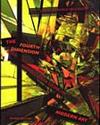- About MAA
- Membership
- MAA Publications
- Periodicals
- Blogs
- MAA Book Series
- MAA Press (an imprint of the AMS)
- MAA Notes
- MAA Reviews
- Mathematical Communication
- Information for Libraries
- Author Resources
- Advertise with MAA
- Meetings
- Competitions
- Programs
- Communities
- MAA Sections
- SIGMAA
- MAA Connect
- Students
- MAA Awards
- Awards Booklets
- Writing Awards
- Teaching Awards
- Service Awards
- Research Awards
- Lecture Awards
- Putnam Competition Individual and Team Winners
- D. E. Shaw Group AMC 8 Awards & Certificates
- Maryam Mirzakhani AMC 10 A Awards & Certificates
- Two Sigma AMC 10 B Awards & Certificates
- Jane Street AMC 12 A Awards & Certificates
- Akamai AMC 12 B Awards & Certificates
- High School Teachers
- News
You are here
The Fourth Dimension and Non-Euclidean Geometry in Modern Art

Publisher:
MIT Press
Publication Date:
2013
Number of Pages:
729
Format:
Hardcover
Price:
54.00
ISBN:
9780262582445
Category:
Monograph
The Basic Library List Committee recommends this book for acquisition by undergraduate mathematics libraries.
[Reviewed by , on ]
Tom Schulte
11/28/2013
This revised edition of a work first published in 1983 details the impact and spread of non-Euclidean geometry and the idea of a fourth dimension into art and thought in the early Twentieth Century. Henderson covers the gamut from philosophy to painting, literature to the plastic arts, and beyond. Along with a new index, there is an extensive hundred-page “Reintroduction” that serves as the author’s reappraisal, history, and synopsis of this impressive work. Looking back on the three decades since the original publication, Henderson considers the further impact of these concepts on art and culture in the late Twentieth Century. The work is well illustrated, though it would have been nice if at least some of the numerous black and white plates had been upgraded to color. This work is strongly persuasive that the reception of fourth dimension theories and related topics was fundamental to the development of modern art.
The arc of popular interpretations of a fourth dimension is covered, including temporal and spatial interpretations. The temporal focus coincided with the popularity of the theory of Relativity from the ‘30s to ‘70s, but a spatial understanding was dominant during the bookends of the Twentieth Century. The art of Duchamp covers this entire span and Henderson charts the artist’s changing commitment to new geometries. Ultimately, Henderson finds, a fourth dimension in its many manifestations eclipsed alternative (non-Euclidean) geometries in the popular mind. It was these higher dimensions that instigated new conceptions of space for R. Buckminster Fuller, Robert Smithson, and the Park Place Gallery group in the ‘60s and more recently for such icons as Tony Robbin and digital architect Marcos Novak.
French author Francis Warrain is quoted on the fourth dimension: “What horizons are opened to scholars, occultists, to poets!” A fascinating part of this history is the intertwined development of occult philosophies along artistic movements. Henderson, a scholar of the occult in the history of Twentieth Century art, cites as a major figure “hyperspace philosopher” Charles Hinton. Among those excited by his books on higher dimensions was Claude Bragdon. Fused with Bragdon’s background in Theosophy and spiritualism, his thoughts went on to be the basis of four books and other writings. R. Buckminster Fuller named Bragdon as an important author, and Martin Gardner referenced Bragdon in his own popular expositions on the fourth dimension. With the occult and philosophical thread, Henderson links such diverse innovators as Marcel Duchamp, R. Buckminster Fuller and Russian esotericist Peter Ouspensky situating them at an intersection of science, mathematics and culture excited by the inspirations of spacetime.
Meticulous to the point of being overwhelming, Henderson convincingly documents the connections between movements such as Cubism, Futurism, Dadaism, Surrealism, Theosophy and more, explaining their interest in higher dimensions and post-Euclidean geometries. One can imagine the rich directed graph uniting visionaries and continents as laid out in these chapters.
Riemann, Poincaré, Einstein and others were not seeking to change art and thought trends, yet they helped give birth to ideas popularized in Abbott’s Flatland, Bragdon’s A Primer of Higher Space, and the mind-expanding visualization exercises of Charles Hinton’s “hyperspace philosophy”. Henderson tracks the key readers of these and similar works, documenting the transmission of ideas and inspiration. By continuing to follow the threads, we see the follow-on impact.
Where, however, are the new creative eruptions in art and thought following on the popularizations of new advances in cosmology and theoretical physics by Hawking, Randall, et al? Are not the implications of black hole evaporation and “branes” as momentous?
Tom Schulte ponders hypercubes, tesseracts, and more while preparing lectures for math students at Oakland Community College.
The table of contents is not available.
- Log in to post comments




